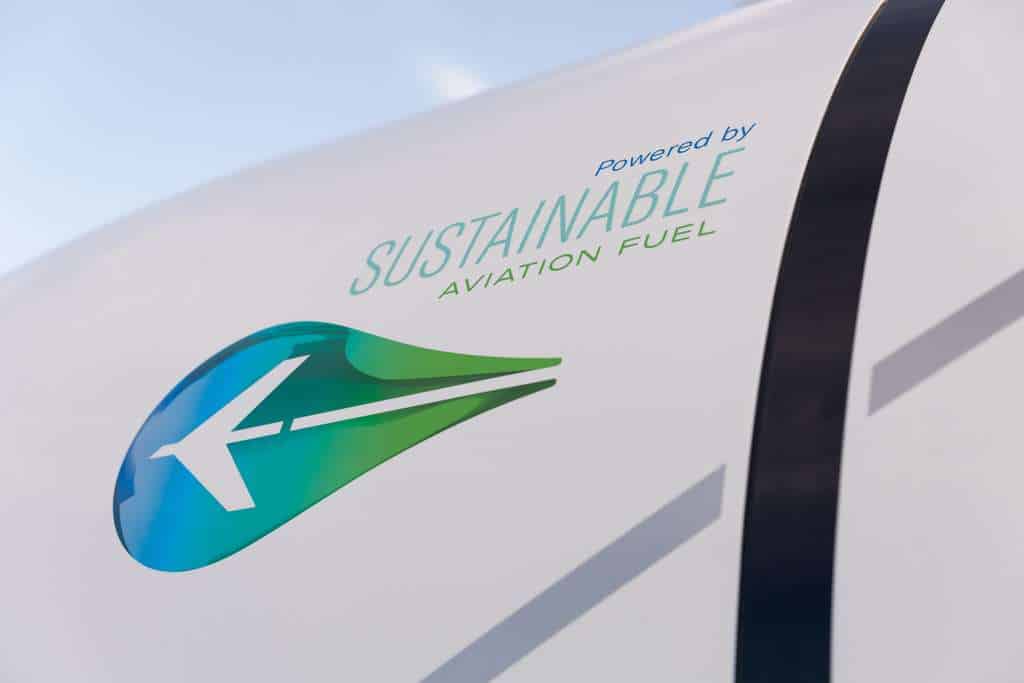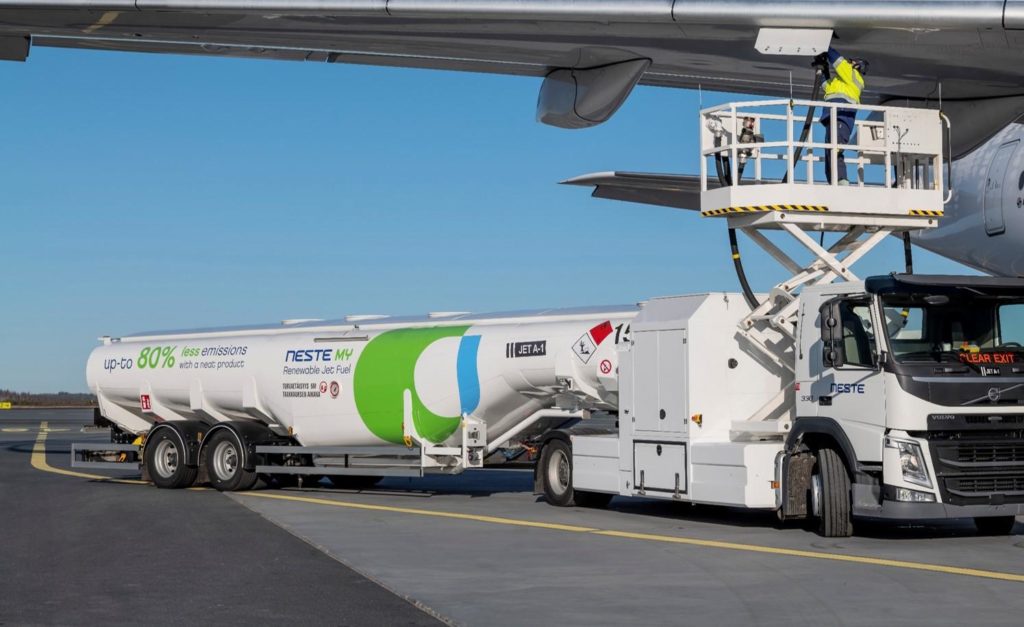The term ‘Sustainable Aviation Fuel’ (SAF) refers to liquid hydrocarbon fuels derived from alternative sources like biofuels, waste-to-liquid fuels, and synthetic fuels.
You’re very likely hearing more and more about SAF as a primary driver of sustainable aviation initiatives.
Politicians, the aviation industry, and even the UN tout these fuels as the solution to decarbonizing air travel.
But is SAF really as sustainable as it’s made out to be? Let’s explore some lesser-known facts and clarify some common misconceptions.
Fact 1: 100% SAF Doesn’t Reduce Tailpipe Emissions
SAFs are still hydrocarbon fuels, producing the same CO2 emissions as kerosene when combusted. Any claimed CO2 savings are ‘net’ reductions achieved during fuel production, similar to carbon offsets.
It’s assumed that the biological materials used to produce the fuel generate zero CO2 emissions, as plant growth absorbs CO2 from the air.
Adjustments are then made for the energy-intensive production process and other factors to claim a net reduction compared to kerosene.

Fact 2: Single Flights Using 100% SAF Don’t Solve Supply Issues
Currently, flights are only permitted to use a 50% SAF blend. Recent ‘demo’ flights using 100% SAF showcase the technical feasibility of operating flights entirely on alternative hydrocarbon fuels.
However, the real issue is SAF’s limited supply (approximately 2.6% of total UK aviation fuel use and closer to 0.1% globally last year).
Fact 3: Waste-based Fuels Can’t Scale Up Sustainably
The UK aims to eliminate biological waste going to landfill, and many so-called wastes already have other uses.
The key alternative – synthetic e-fuel – can be produced from captured carbon and green hydrogen. However, this is only being produced in small quantities due to high costs and the need for large amounts of renewable energy.

Fact 4: Official Forecasts Don’t Match SAF Hype
Officials will sometimes portray SAF as a magical solution to aviation emissions, particularly when challenged about private jet use. However, Department for Transport modelling tells a different story.
Even under the UK Government’s ‘High Ambition’ Jet Zero pathway, SAF plays a smaller role in decarbonizing aviation than ‘out of sector’ emissions reductions (offsets and carbon removals) and demand reductions generated by pricing carbon.
Fact 5: Hype Risks Hushing Up Decarbonization Challenge
The independent Climate Change Committee has described the Jet Zero Strategy as relying too heavily on nascent technology and fuels and ignoring the need to limit demand growth. At present, sustainable aviation is an aspiration, not a reality.
While we wait for genuine zero-emission fuels and technologies, we need to start cutting emissions in the only definite way: by flying less.

SAF: Pros & Cons
Viewed in this light, Sustainable Aviation Fuel (SAF) has the potential to significantly reduce the carbon footprint of aviation. However, it’s important to have a nuanced understanding of its benefits and limitations. Here’s a breakdown:
Pros:
- Reduced CO2 emissions: SAF can achieve lifecycle carbon reductions of up to 80% compared to traditional jet fuel. This is because it utilizes sustainable feedstocks that absorb carbon dioxide as they grow, partially offsetting emissions released during combustion.
- Drop-in fuel: SAF is compatible with existing aircraft and infrastructure, requiring no modifications. This facilitates faster adoption within the industry.
- Variety of feedstocks: SAF can be derived from various sources, including used cooking oil, agricultural waste, and even captured carbon dioxide, potentially reducing reliance on dedicated land use for energy crops.
- Growing momentum: Production capacity and investment in SAF are increasing rapidly, offering hope for scaling its impact in the future.

Cons:
- Limited availability and high cost: Currently, SAF production is much lower than conventional jet fuel, resulting in higher prices. This limits widespread adoption across airlines and routes.
- Sustainability concerns: Depending on the feedstock and production methods, SAF might indirectly contribute to deforestation, land-use change, or competition with food resources if not managed sustainably.
- Not a complete solution: Even with SAF, aviation still generates other emissions like NOx and contrails that contribute to climate change. Technological advancements like electric or hydrogen-powered aircraft are needed for a truly sustainable future.
Conclusion
SAF is a promising technology with the potential to significantly reduce the environmental impact of aviation.
However, it’s not a magic bullet. Recognizing its limitations and fostering responsible production are crucial for maximizing its benefits and ensuring its true sustainability.
It’s important to consider SAF as part of a broader strategy that includes other emissions reduction measures and technological advancements.

Click the banner to subscribe to our weekly newsleter.

Click the photo to join our WhatsApp channel so then you can stay up to date with everything going on in the aviation industry!









